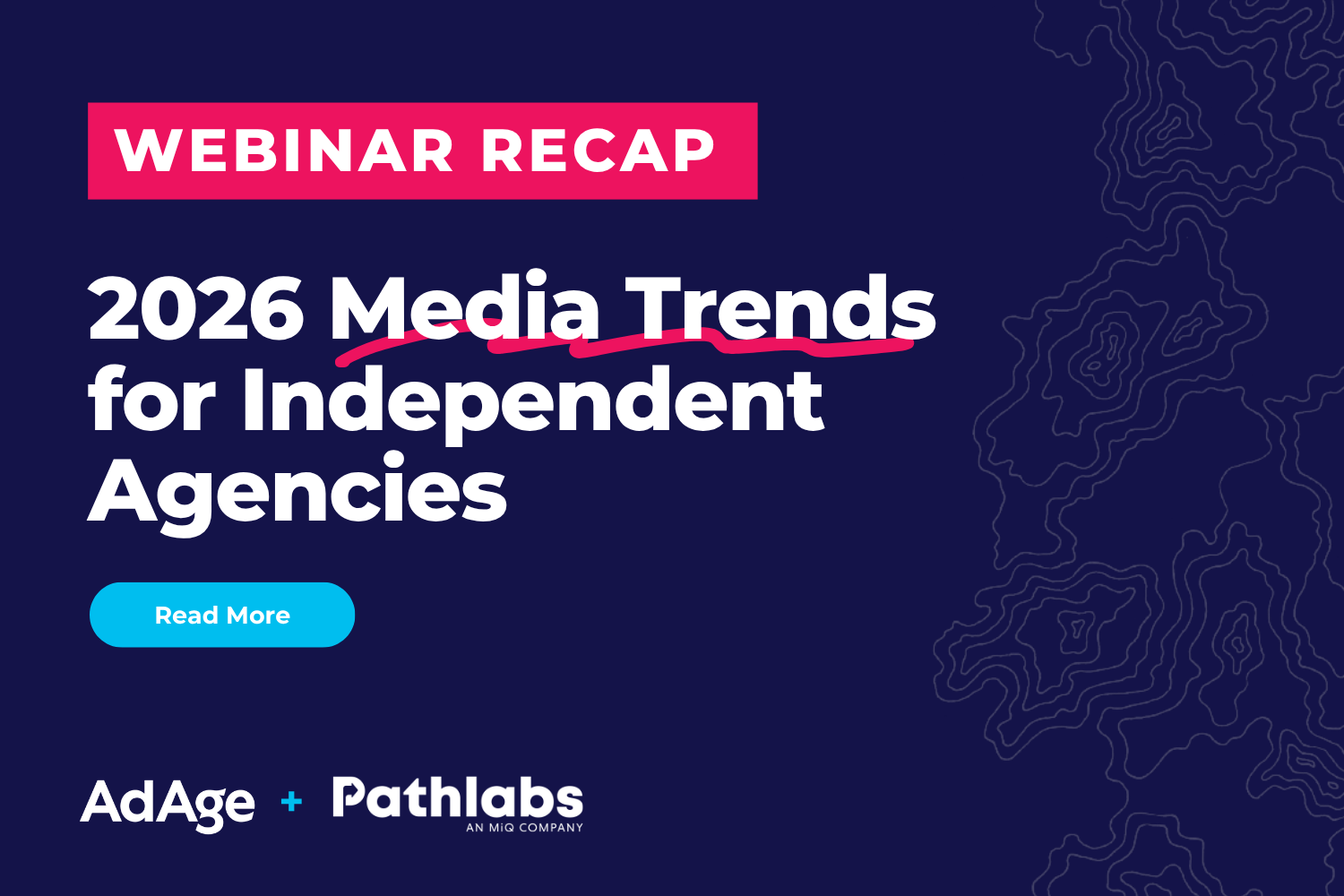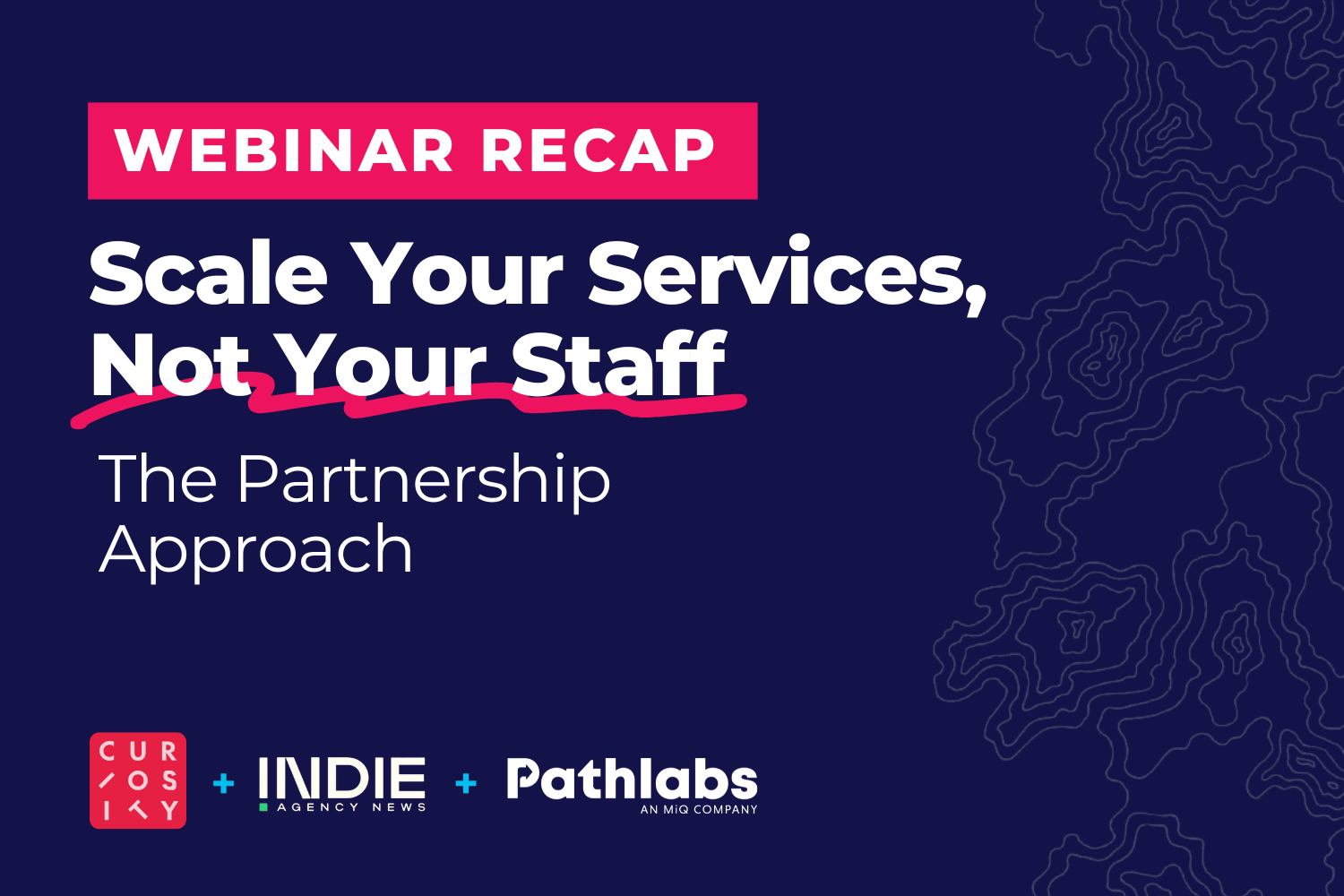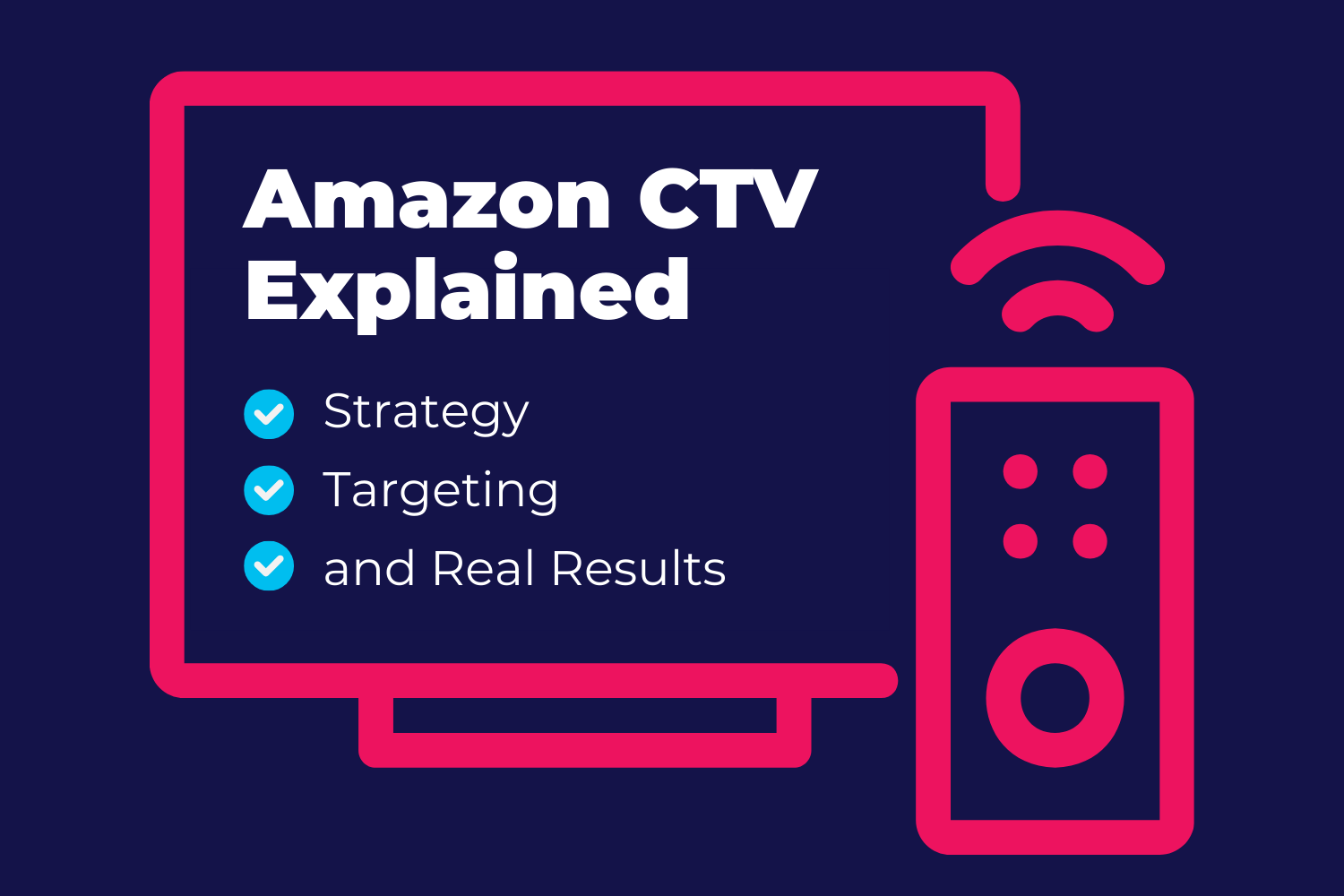Navigating Uncertainty in Online Advertising Tracking
| Pathlabs Marketing |
| July 17th, 2024 |
Tracking in advertising refers to the processes and activities involved in collecting data for digital media campaigns. Digital media experts can execute various online campaigns using ad-buying platforms, such as display and CTV campaigns with The Trade Desk, paid search campaigns with Google Ads, and paid social campaigns on Pinterest, LinkedIn, and Meta, among others.
As campaigns launch and ads serve to users, these teams can collect—“track”—data like the impressions, views, and clicks driven by their ads, which most ad-buying platforms automatically record. Additionally, increasingly more tools are available to collect data about conversion events users trigger after clicking on an ad and subsequently engaging.
The main goal of tracking implementation is to collect the core data that indicates an ad campaign's impact and performance. Teams can then use this data for further analysis, reporting, and enacting campaign optimizations.
Despite the multitude of data media teams can track nowadays, challenges with tracking implementation still arise. These might stem from the overwhelm of choosing from various tracking methodologies, difficulties in placing pixel tags and creating UTM parameters, or overall mistrust in the collected data.
In this blog, we aim to provide an overview of the tracking methods we implement daily at Pathlabs, discuss underlying uncertainties and challenges in tracking, and share strategies to help you approach these activities with the right mindset.
What’s Behind the Uncertainty in Online Advertising Tracking?
Uncertainty in tracking digital media campaigns primarily stems from the initial fact that many tracking implementation methodologies are available, each requiring a learning curve and numerous steps.
Here are the top three ways digital media teams typically implement tracking for their campaigns:
Automatic Tracking Data Provided by Platforms
Ad-buying platforms used for executing digital media campaigns track and collect data automatically. This includes basic metrics such as impressions and clicks, which provide a foundational understanding of campaign performance. These platforms also calculate metrics like click-through rate (CTR) and viewability. Teams can simply access this data and report on it.
UTM/URL Link Tracking
Media teams need to track where the traffic coming to their web locations originates – especially the traffic driven by ad campaigns. To do so, teams can leverage UTM parameters—snippets of text appended to the end of destination URLs in ad campaigns.
These snippets indicate the source, medium, campaign, term, and web traffic content. When users click on ads with UTM-tagged links and arrive on landing pages, web analytics tools like Google Analytics capture the corresponding UTM parameters to classify the traffic and tie it back to the ad campaign.
For example, if you are executing a display campaign for a summer sale, you could set the following UTM parameters:
utm_source: displaynetwork
utm_medium: paid_media
utm_campaign: summer_sale
utm_term: summer_sales_deals
utm_content: summer_banner_ad1
When users click on ads with these UTM parameters, they are taken to their destination (the landing page), and the analytics tool will collect this UTM information, indicating that this specific ad creative drove the traffic.
Pixel and Conversion Tracking
Beyond the basic data tracked via ad platforms and UTMs, media teams use pixel and conversion tracking to monitor specific actions users take on landing pages and other web locations after clicking an ad.
Pixel and Conversion events teams can track include:
Landing Page Views
Clicking buttons
Filling out forms
Making phone calls
Adding products to the cart
Making actual purchases
Viewing videos
Booking introductory meetings
Downloading e-books
Clicking from a landing page to another page
Teams can create different pixel tags (often using tools like Google Tag Manager) and insert them into the coding of key areas on their landing pages and web locations. When users visit these pages via ad campaigns and complete conversion events, the connected pixels "fire" and send data back to the advertising team’s analytics tools or the ad-buying platform used for execution. This records the event and associates it with the campaign.
AdTech players like Meta, Pinterest, LinkedIn, and The Trade Desk offer custom pixels that media teams can place on landing pages and web locations to understand the conversion events driven by these campaigns. Especially with walled garden pixels, such as the Facebook pixel, teams place it on their web location. Facebook then follows and identifies users moving between the web location and the social media platform, even placing them into an audience that the media team can use for retargeting.
Breaking Down the Challenges of Ad Tracking
Channel and Platform Fragmentation
Media teams increasingly use a full-funnel approach, running awareness, consideration, and conversion campaigns simultaneously. The proliferation of ad-buying platforms and channels also means they can run campaigns across display, online video, CTV, paid search, paid social, and more.
Every additional channel the media team invests in requires access to different platforms and new tracking implementation steps to account for. While tracking principles across channels can be similar, significant time and research are necessary for proper setup and execution.
Complexity, Time, and Bandwidth Limits
Building on the previous point, teams need comprehensive tracking measures for every ad campaign. Independent agencies and Media Execution Partners (MEPs) often execute hundreds to thousands of campaigns, making tracking implementation a significant task.
Add this to the high pace of media planning, campaign building, and client performance delivery, and it can overwhelm teams with limited bandwidth. When people get stretched and workflows fall apart, this naturally leads to poor tracking strategy and missed steps, causing even less certainty in the collected data.
Data Discrepancies and Inconsistencies
Tracking often involves troubleshooting data discrepancies and inconsistencies. These are usually the main culprits:
Pixels don’t fire correctly, resulting in missed event conversion data points. Setting up pixels involves multiple steps: creating events to track, generating the pixel, placing it on the webpage, linking it to other tools, and assigning it to the campaign. These steps can be easy to forget or incorrectly executed.
UTM parameters can get stripped, depending on site technologies and frameworks, causing webpage traffic not to be classified as campaign-driven. Many fail to follow the "Keep UTMs Simple, Stupid" (KUSS) rule, creating lengthy parameters that are prone to errors.
Discrepancies can arise with conversion data when multiple platforms and tools are involved. For example, differences may occur between the ad-buying platform, the tracking tool used by the media team, and the client's CRM system. If an agency tracks 20 purchase conversions in the buying platform, but the client sees only 18 purchases in their CRM, this raises questions about the accuracy of the tracking. Even more frustrating, where is the problem coming from? It can be hard to tell.
Human Error
Human error is a significant challenge in ad tracking. Media teams often have to handle tracking implementation, but this does not mean they are tracking specialists or experts. In fact, reliance on bootstrapped tracking knowledge can lead to problems.
Tracking implementation can also require interfacing with the advertised brand's web developers or other departments. These players might place pixels incorrectly or make changes to web locations on the back end that disrupt tracking capabilities, affecting data collection and campaign performance analysis.
Technological Error
In the grand scheme of things, campaigns rely on technology to find users and serve ads. These systems handle vast amounts of data, serving ads to hundreds of thousands of users every second. Glitches and errors in these tech systems can lead to incorrect counts of impressions, clicks, or conversions, introducing uncertainty that teams must account for in their analyses. This uncertainty is something we all have to live with.
It is also becoming more common for users to install different ad and tracking blockers. This means that when users come to a web location, they can make it so they don’t see ads, block their cookies from being read, or if they perform certain conversion events, these won’t fire and be recorded. This inevitably adds more variability and uncertainty to the data.
“For Pathlabs, we continue to address these tech issues by developing custom tools in-house to track pixel fires and note anything unusual. This allows us to quickly catch problems with as little data loss as possible.”
A note on Conversion Modelling, Attribution, and Cookies
Tracking often intersects with attribution, particularly around conversions and assigning credit. In straightforward cases, a user clicks an ad and immediately converts on a landing page, easily attributing the conversion to the ad campaign.
However, users might view an ad without clicking and later convert through a different channel or independently – they might even switch to a different device.
In these cases, it's challenging to determine if the initial ad influenced the conversion. To address this, platforms like Facebook and Google use conversion modeling, providing statistically generated numbers to estimate the conversions driven by a campaign, including view-through conversions.
This approach can lead to discrepancies, as different platforms may show varying modeled conversion numbers – which can often conflict with measured conversions via other conversion tracking tools.
Cookies also fall into this conversation. They have been vital in helping identify and recognize users across different locations and devices, aligning with helping tech platforms serve the most relevant ad. Cookies have also found their way into assisting with conversion tracking and attribution. However, as you no doubt know, third-party cookies are slowly being deprecated across most platforms. The overall implication is less accuracy in conversion tracking, attribution, and tracking in general.
Strategies for Effective Advertisement Tracking
1. Make Tracking a Standard Practice
Before launching any campaign, ask, “What are the essential data points we want to track, how will this be tracked, and how can we ensure it shows up in our reporting and analytics tools?”
Use UTM parameters and pixel tags whenever possible. These tools are essential for tracking incoming traffic to web locations and event conversions.
“A tracking strategy requires as much attention as any other piece of digital media execution. The impact and success of a campaign and future campaigns depend on having a robust tracking strategy. It is equally important.”
2. Focus on Core, Hard Conversions
Track the conversion events that align with your campaign goals. For instance, if your primary goal is to drive purchases, ensure that you have tags and tracking mechanisms in place to capture this data and link it back to your campaign. Even for awareness or consideration campaigns, tracking events further down the funnel can provide insights, as some users may more directly take action and convert.
On the other hand, don’t discount the softer conversion events you could track, like page views or button clicks; they still help tell the story of the campaign performance.
3. Learn From Low Conversion Rates
Don’t feel discouraged if you don’t immediately drive many conversion events. Use these instances as opportunities for learning and testing. Analyze what might be causing the low engagement and experiment with different strategies to improve performance. For example, if you notice a high number of ad clicks but your conversion tracking shows only page view events, it indicates that users are likely bouncing upon arrival.
Similarly, if you see a lot of add-to-cart events but no purchase events, it might mean you are reaching the right audience, but your checkout process is holding users up. These are key data points to track to help identify and address issues and optimize your campaigns.
Navigate Uncertainty in Online Advertising Tracking With a Media Execution Partner (MEP)
Independent agencies are often at bandwidth capacity when performing campaign execution tasks for brand clients, leaving little time for quality tracking implementation.
This is where collaborating with a Media Execution Partner (MEP) like Pathlabs can help. We partner with independent agencies to assist with all aspects of their digital media execution. Even better, we have an entire team of tracking specialists equipped to handle tracking implementation for the thousands of campaigns we execute annually for our agency partners.
This team operates under a rigorous, structured tracking process for each channel and medium. Before launching a campaign, they must identify data and events to track, place all necessary pixels, generate all UTMs, and ensure to configure any additional tracking tools. At Pathlabs, we aim to complete and quality assure all these tracking tests days prior to the campaign launch to avoid any last-minute problems.
Agency teams can delegate as many of these tracking tasks as needed to our team. If they prefer to own any specific part of the tracking process, we let them do so while we remain on standby every step of the way – that’s a partnership, after all.
If you want to learn more about partnering with Pathlabs to confidently navigate the complexities of online advertising tracking, contact us today.












